15 Flat-Faced Dog Breeds
Many people fall in love with pups that have smushed noses and big, soulful eyes. But there’s more to these flat-faced dogs than meets the eye, and beneath their undeniable charm are unique health challenges—and special care requirements—all pet parents must manage.
Here’s what to know before adding a flat-faced dog breed to your family.
Health Considerations for Flat-Faced Dogs
In dogs, “brachycephalic” refers to breeds with a skull that’s short in length with a face that’s flat or pushed in, often resulting in a snub-nosed or "smushed" appearance. This anatomical feature is common in breeds like Bulldogs, Pugs, and Shih Tzu.
Because of their unique head structure, dogs with flat faces can be prone to certain respiratory, dental, and eye abnormalities. This includes:
-
Brachycephalic airway syndrome (BAS): The dogs’ short skulls and flat faces result in narrowed nostrils, elongated soft palates, and a narrowed windpipe that can lead to various respiratory symptoms, including noisy breathing, snoring, and labored breathing.
-
Overheating: Brachycephalic dogs are not as efficient at regulating their body temperature due to their compromised airways. They struggle to cool themselves through panting due to the narrowing of the respiratory passages, making them highly susceptible to overheating and heatstroke. It is important to keep these dogs in a cool environment, avoid strenuous exercise in hot weather, and limit exposure to stress.
-
Dental disease: Many flat-faced breeds are prone to dental issues, as crowded teeth and misaligned jaws can lead to dental disease. Regular dental care, such as teeth brushing at home and professional cleanings, can help maintain oral health.
-
Eye problems: Some flat-faced dogs have prominent and protruding eyes. Their eyelids may not close all the way over them, making these dogs susceptible to irritation and dry eyes. Some may not produce a normal amount of tears, which can lead to dry eyes and thick yellow discharge that requires artificial eye lubricant.
-
Gastrointestinal issues: Brachycephalic dogs may also be more prone to gastrointestinal problems, including gastric reflux and regurgitation. Feeding them smaller, more frequent meals; using medications to help with reflux; and surgical correction of respiratory passages can eliminate these issues.
-
Exercise limitations: Due to their compromised respiratory systems, brachycephalic dogs should avoid strenuous exercise. Overexertion can quickly lead to exhaustion and respiratory distress. Providing low to moderate exercise is ideal, and pet parents must be vigilant for signs of distress during physical activity.
Flat-Faced Dog Breeds
Here are some of the most popular dogs with flat faces.
1. French Bulldog

French Bulldogs, often affectionately referred to as Frenchies, are a popular small flat-faced dog with a charming personality. They are adaptable to various living environments, meaning they’re suitable for both city apartments and suburban homes.
A relatively low-energy breed, Frenchies enjoy short bursts of playtime but are equally content to relax with their family. French Bulldogs have their health challenges, which include breathing issues and the occasional bout with allergies. They are the most popular dog breed in the U.S.
2. Affenpinscher
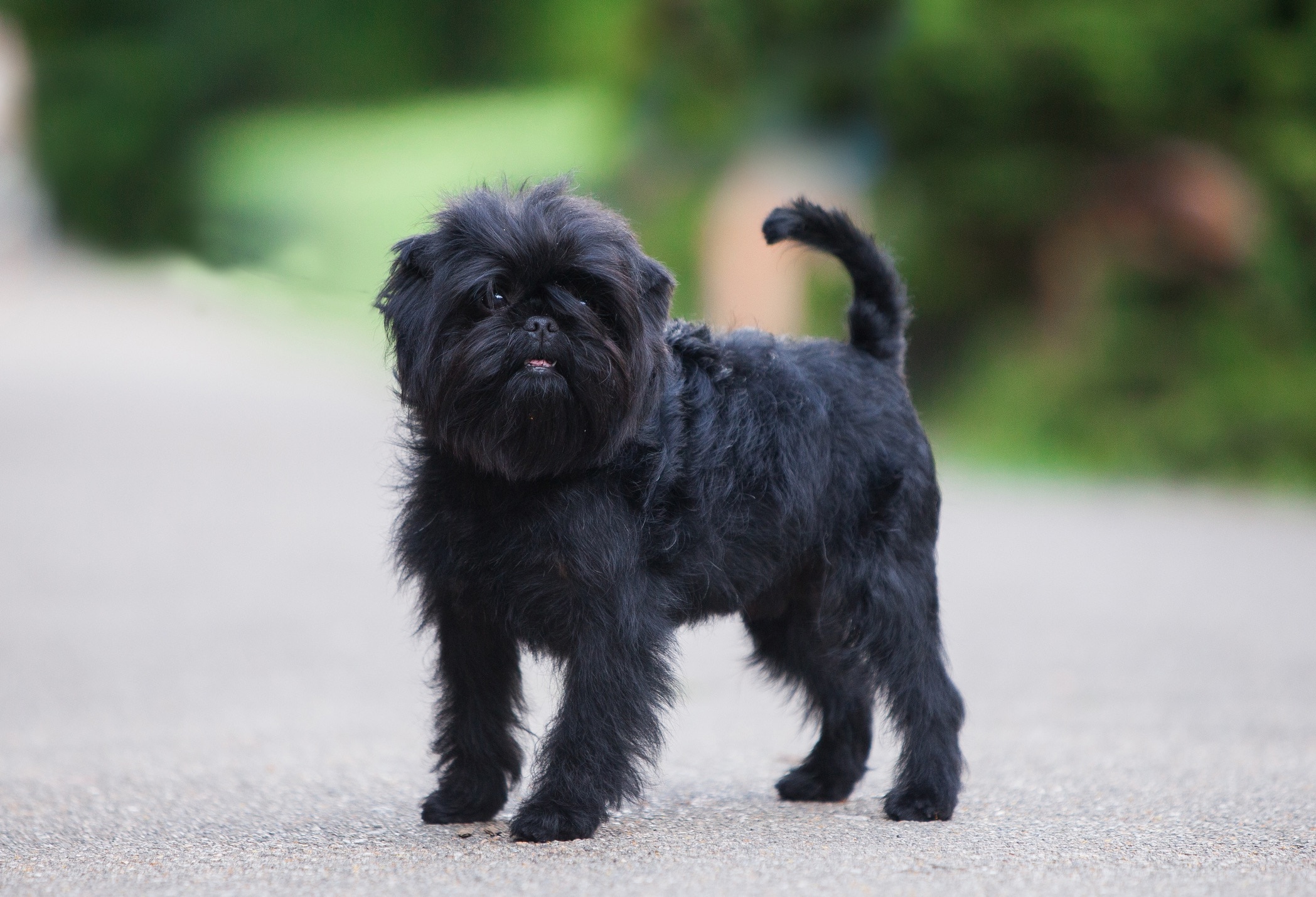
Affenpinschers are extremely energetic, and need lots of daily walks and frequent physical activity. They may be small at just 10 pounds, but they have the confidence of giants. They are loyal to their families, though they might give strangers the side-eye.
While Affenpinschers are usually healthy, they might face challenges like hip dysplasia, which can affect their mobility as they age.
3. Shih Tzu

Originating from Tibet, Shih Tzu were given as gifts to Chinese royalty centuries ago. They sport a luxurious double coat and a cheerful temperament: They are the ultimate social butterflies, and most get along well with kids and other pets, especially when properly socialized.
Shih Tzu tend to overproduce tears, which can cause brown or red tear stains beneath their eyes. Regular grooming sessions are a must to keep them looking their best.
4. Pug

The Pug is an ancient breed and one of three flat-faced dogs bred in China (along with the Shih Tzu and Pekingese). Bred to be companion animals, they are a devoted and friendly breed.
Pugs are known for their comical personalities and thrive in any environment, be it city life or a country farm. Just be sure to keep an eye on their waistline: Obesity is common in this breed, and extra weight can worsen health problems.
5. Pekingese
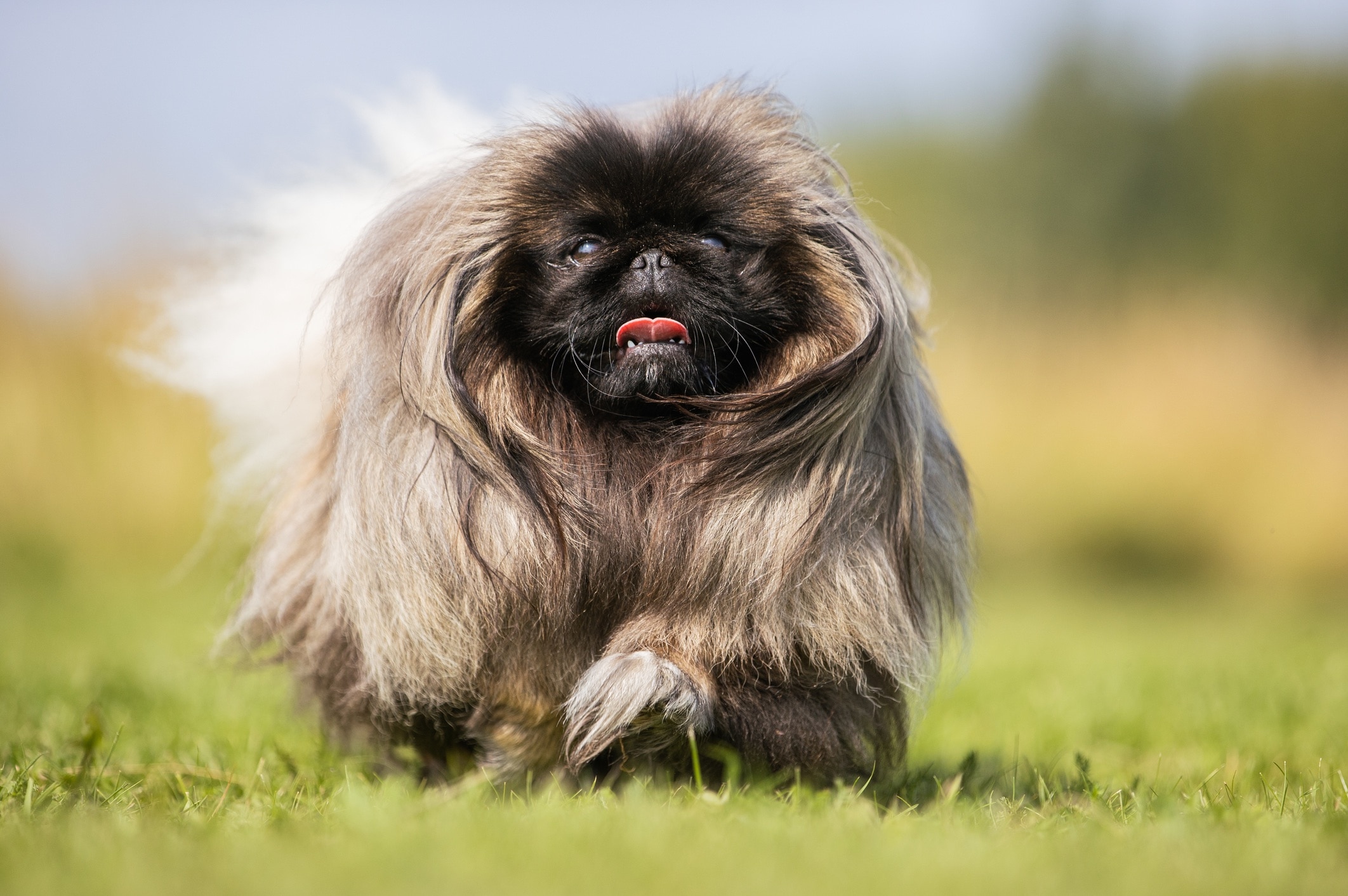
Another dog from ancient China, Pekingese are known for their lion-like appearance, with a flowing mane of fur and a flat, pushed-in face. These dogs have a regal and dignified demeanor, often displaying a strong bond with their pet parents.
Despite their small size, Pekingese can be quite assertive and independent. Their thick coat requires regular grooming to prevent matting and maintain their elegant appearance, making them a perfect addition to any household.
6. Boxer

Boxers are characterized by their energetic and loyal nature, making them excellent choices for family pets. Boxers require a lot of physical activity and respond well to obedience training. However, they are susceptible to certain health conditions such as heart disease, hip dysplasia, and various forms of cancer.
7. Cane Corso

The Cane Corso is an Italian breed known for an impressive stature and even more impressive loyalty. These dogs thrive when they have a job to do, as their strong work ethic and intelligence make them happiest when they have a purpose.
8. Boston Terrier

With friendly brown eyes and a gentle disposition, the Boston Terrier is known for intelligence and curiosity. Often referred to as the American Gentlemen, they are one of the few dog breeds that originated in the United States.
Boston Terriers usually weigh 12–25 pounds and have a tuxedo-like black and white coat. Because their eyes are prominent, Bostons are more likely to incur eye injuries, so extra care while playing may be needed.
9. Japanese Chin

The Japanese Chin is another flat-faced dog breed that dates back centuries. They were originally bred to be companions to Japanese aristocracy and are still celebrated for their sweet and loyal nature.
Japanese Chin are incredibly graceful and gentle, and they are often likened to felines due to their dainty movements and tendency to perch in high places. They make great lap dogs and are surprisingly playful.
10. English Bulldog

English Bulldogs, with their endearing wrinkled expressions and signature underbite, are known for an easygoing nature that makes them excellent family companions. Despite their somewhat grumpy appearance, Bulldogs usually make friends with people and dogs alike. Bulldogs are also notorious for their love for napping; they can be found snoozing throughout the day, earning them a reputation for being couch potatoes.
Because this is a dog with a flat face and adorable facial wrinkles, these folds can be prone to skin infections and irritation if they are not cleaned routinely with pet-safe wipes.
11. Dogue de Bordeaux

Sometimes called the French Mastiff, the Dogue de Bordeaux is a gentle giant originating from Bordeaux, France, where they were used for guarding, hunting, and pulling carts.
They're as sweet as a box of macarons and incredibly loyal, which can make them fantastic additions to any family that has space for a 120-pound pup. But because they are so big and brawny, Dogues benefit from early positive reinforcement-based training and socialization to help them develop good manners.
12. Brussels Griffon

The Brussels Griffon, a small, flat-faced dog, is known for its expressive face that makes it look like a little Ewok from “Star Wars.” These dogs thrive on human companionship, making them faithful and loving pets.
They have a delicate build, typically only weighing 8–10 pounds, so care should be taken when handling them. They may require protection in extreme weather due to their small size. Despite their tiny stature, Brussels Griffons have big personalities, and are known for their entertaining antics and lively disposition.
13. Chow Chow
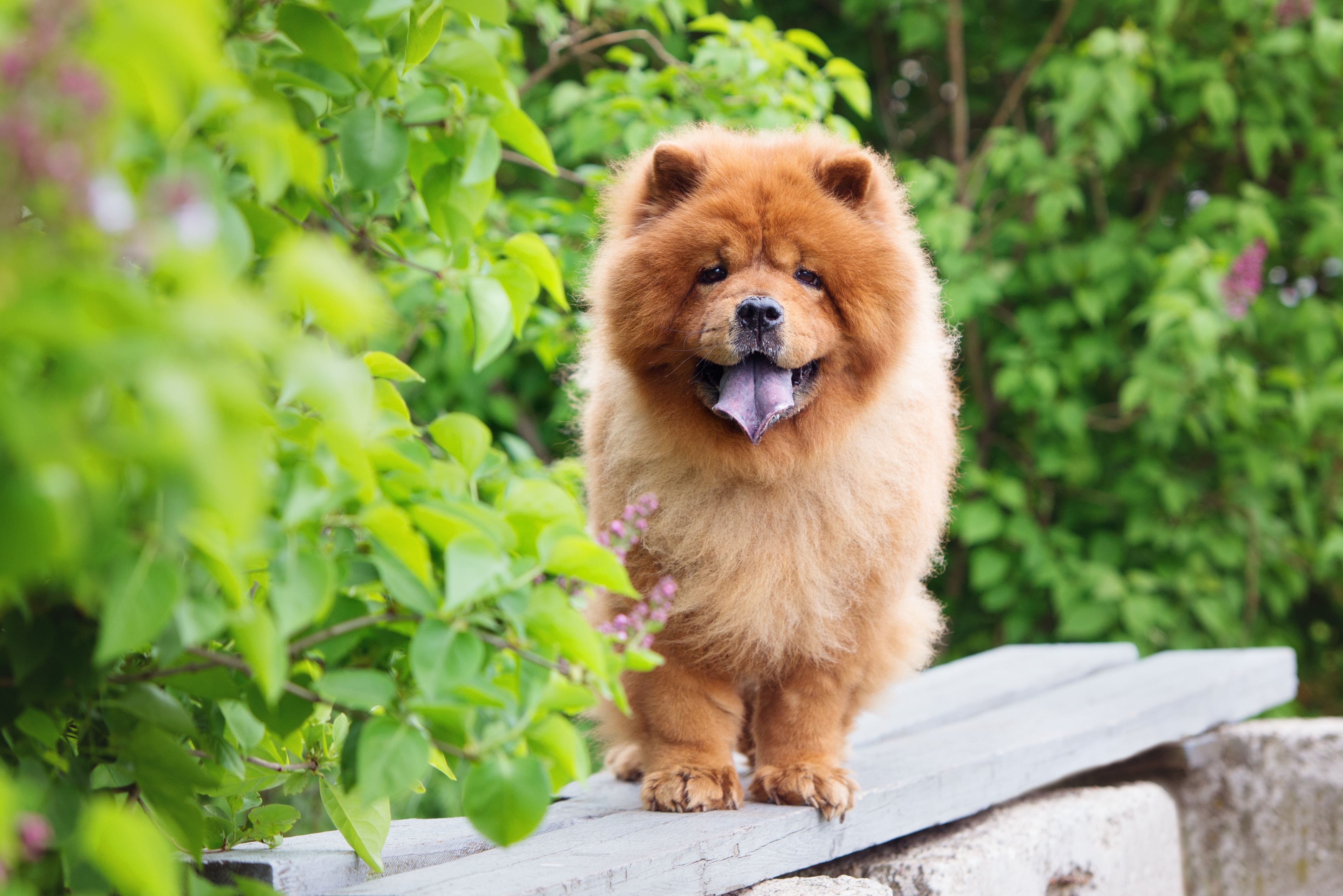
Chow Chows are medium-sized dogs recognized for their lion-like mane, unique blue-black tongue, and a dense double coat that requires regular grooming to keep it in top condition. They are particularly known for their loyal but aloof temperament.
Because they might be suspicious of new people and other animals, socialization is key for Chows to be well-mannered. Proper training and early exposure to different people and situations can help this flat-faced breed flourish as a loyal companion.
14. Bullmastiff
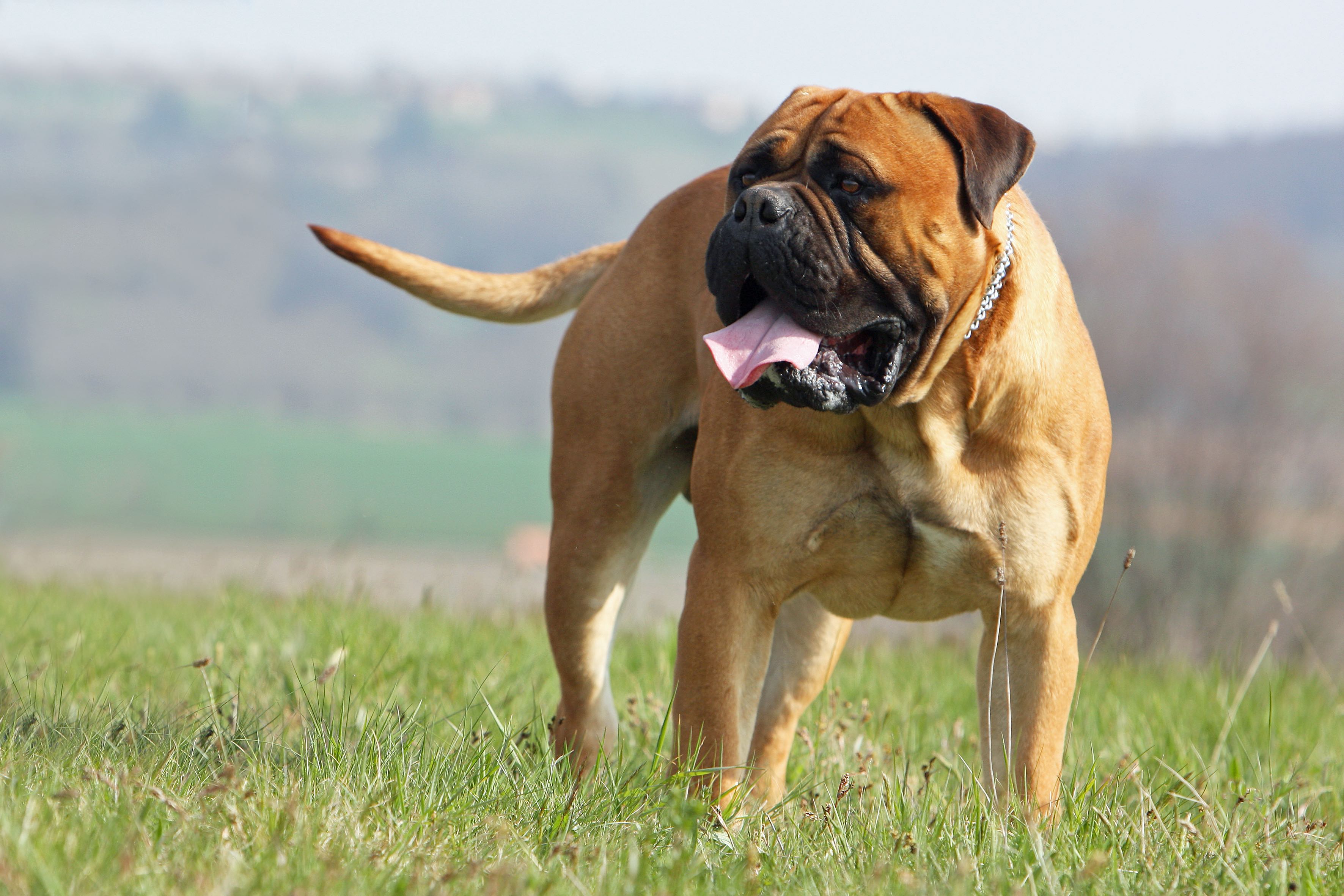
First bred by crossing Bulldogs and Mastiffs, the Bullmastiff is a large dog with a flat face. Bred in the mid-1800s to protect English estates from poachers, Bullmastiffs need a good dose of exercise and proper, patient training to be the best dog they can be.
These loyal dogs are prone to hip dysplasia, a common joint condition, so keep up with routine wellness exams and prioritize their joint health. Bullmastiffs may benefit from joint supplements.
15. Lhasa Apso
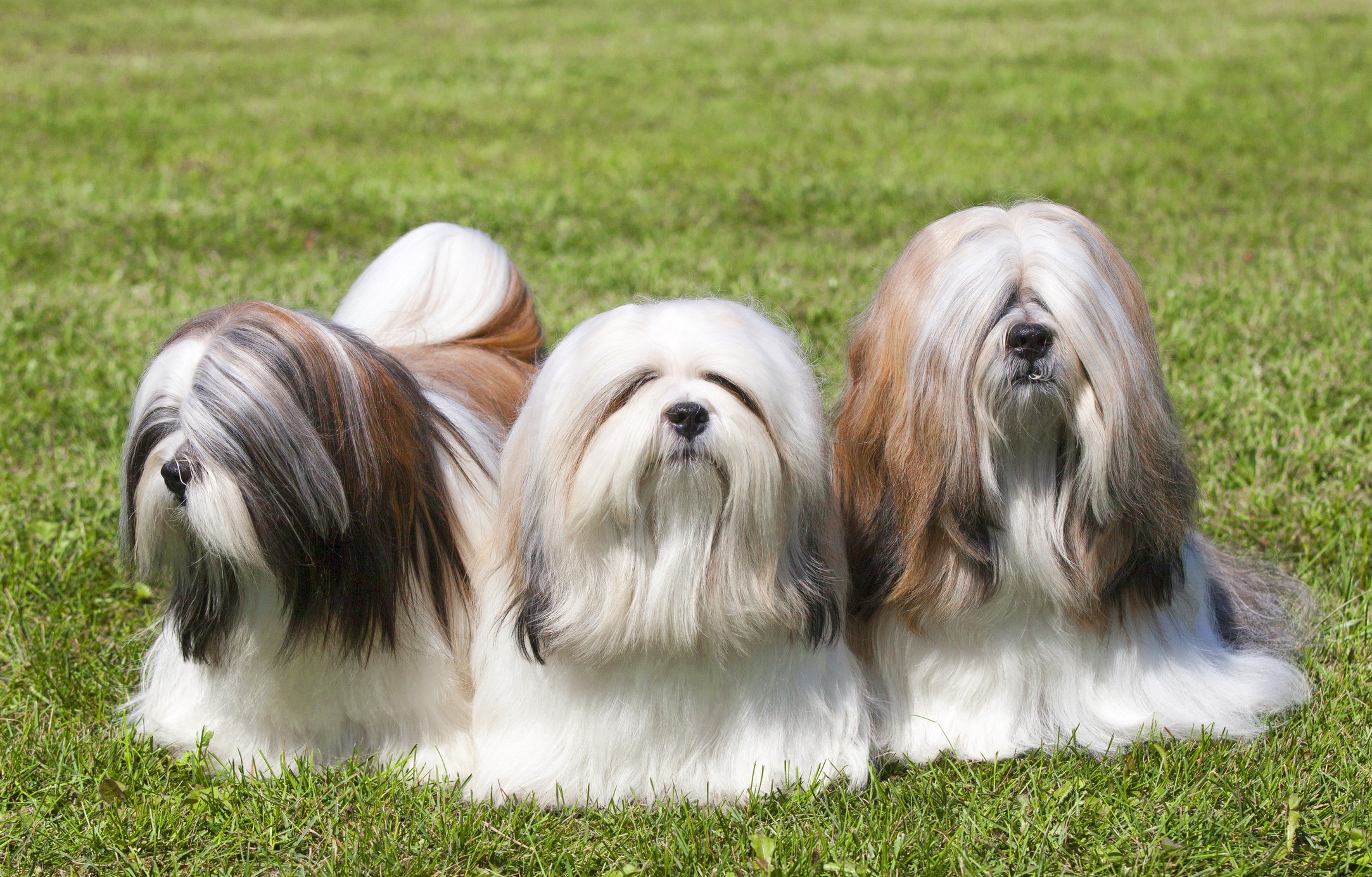
Lhasa Apsos are a small, ancient breed hailing from Tibet, where they were cherished as watchdogs in Buddhist monasteries. Known for their long, flowing coats, they exude an air of elegance. Because of their history as guardians, these dogs are loyal to their families but can be wary of strangers.
Brachycephalic breeds offer a blend of endearing traits, and their lovable personalities have earned them a dedicated following of adoring fans. However, it is important to remain vigilant about the health concerns associated with their unique anatomy, as responsible pet parenthood and informed decision-making can help ensure a happy life for flat-faced dogs.
Featured Image: O.T.W./iStock / Getty Images Plus via Getty Images
References
Brooks, Wendy., DVM, DABVP. Brachycephalic Airway Obstruction Syndrome in Flat-Faced Dogs. Veterinary Partner. VIN. 2023.
Merck Veterinary Manual (9th edition). Merck & Co., Inc and Whitehouse Station, N.J., USA. 2006.
The American Kennel Club. The Complete Dog Book. 20th Edition. Ballantine Books. 2006.
The Cost of Cuteness: Health and Welfare Issues Associated With Brachycephalic Dog Breeds. Humane Society Veterinary Medical Association.
Brachycephalic Syndrome. American College of Veterinary Surgeons.
